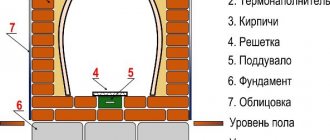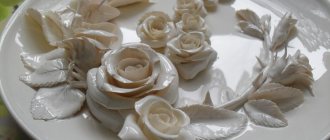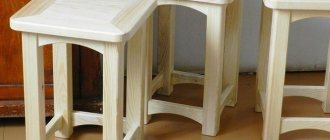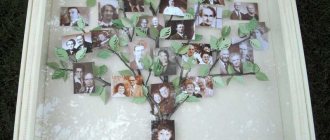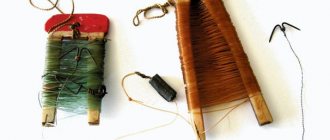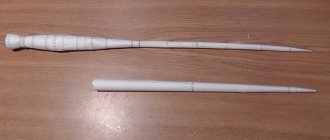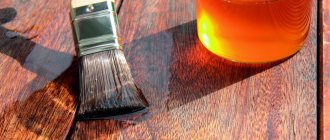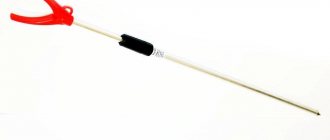SHARE ON SOCIAL NETWORKS
FacebookTwitterOkGoogle+PinterestVk
The tandoor is a multifunctional oven in which you can cook any dish of oriental cuisine, using a minimum amount of fuel. The structure can be stationary or portable, made of clay or brick. Hardwood is used as fuel for the tandoor. Such a stove can be purchased ready-made or you can make a tandoor with your own hands, following certain stages of the technological process.
Tandoor is a multifunctional oven used in traditional oriental cuisine
Types of tandoors
Tandoors differ from a conventional oven in their special configuration, thanks to which you can forget about undercooked meat and vegetables. They also prepare aromatic oriental flatbreads - right on the walls. Externally, a classic tandoor resembles a clay jug in which firewood is placed, and then skewers are hung.
Uzbek tandoor
To create Uzbek tandoors, sand and camel hair were added to fireclay clay. A volumetric dome with a wall thickness of about 5 cm was sculpted from it, dried for 3 weeks and used as a top for the hearth. It is very difficult to make such a blank without experience, but now ready-made forms are even sold.
Photo: apriltime.ru
Armenian tandoor
The tandoor in Armenia is called “tonir” and it is also used to heat houses. Armenian tandoors were made from fireclay bricks, because local clay is not so pliable and durable. Essentially, it is a brick cylinder with clay joints and a plastered inner surface.
Photo: zen.yandex.ru
Earth tandoor
An earthen tandoor is made in a hole about 1-1.25 m deep with an air duct hole. The walls and bottom are lined with fireclay bricks and clay mortar. Or you can immerse a ready-made clay piece into the pit and compact it well. Such stoves retain heat best of all, but they cannot be dug in every soil.
Photo: sdelai-lestnicu.ru
Ground tandoor
As is obvious from the name, the ground tandoor is completely above the ground and is more reminiscent of a classic Russian oven. Firewood is placed in the roasting pan, and the draft is provided by a hole at the bottom. Fuel is loaded from above or from the side, and when it is completely burned out, you can lower the food.
Photo: icepohod.rf
Mobile tandoor
Compact portable tandoors are great for the garden and can be taken with you. They are made in the form of a barrel or jug from durable fireproof clay with a lid and handles. Larger models can be reinforced with steel strips.
Photo: nyctandyr.com
Wood-burning tandoor
This is a classic tandoor that uses firewood or coals. There is always a hole at the bottom for air flow and ash removal, so that the lid can be tightly closed during cooking. Only hardwood firewood is used due to the specific resins in the pine needles.
Photo: ventkam.ru
Gas tandoor
This is a modern variation of tandoors for professional kitchens and bakeries. There is also a clay pot inside, but the main body is made of steel. Gas is used instead of firewood, so using such a tandoor is no more difficult than using a home stove.
Photo: ru.m.wikipedia.org
Electric tandoor
Another modern variation, in which heating elements - tubular electric heaters - are placed on the bottom instead of fuel. They do not burn or smoke, so the device can be used even indoors. But keep in mind that the taste of cooked products will not be the same as when cooked over wood.
Photo: frutisad.ru
Insulation and finishing
The clay bowl is not everything, and the final appearance of the tandoor is not at all the same. The second layer, brick, is being laid out. Between the two layers of walls, insulation should be laid, or rather, a suitable heat-intensive material. It could be regular sand. And what’s important is that the thicker the walls, the longer they will retain heat - this rule also works in the case of a tandoor.
And finally, for many, the most favorite moment in the entire work process is decorating the tandoor. You can lay out its surface with beautiful tiles (with oriental and Asian patterns, for example). The surface can be beautifully plastered, or natural stone, painting, mosaic techniques can be used for finishing – whatever.
The oven-broiler, decorated with small mosaic tiles, looks especially beautiful. Just not chaotically decorated, but using some kind of pattern or other artistic logic of laying out tiles.
Of course, you need to take into account the harmony of the tandoor with the site on which it will stand. In terms of color choice, this is especially important.
Tandoor dimensions
To decide what size tandoor you need, consider how many foods you want to cook in it. For one or two simple mobile stoves are enough, but for company trips or family gatherings you need a larger option. Tandoors can be roughly divided into small ones up to 40 kg, medium ones up to 80 kg, large ones up to 100 kg and very large ones heavier than 100 kg.
Photo: cyprus-oven.ru
Rule for styling
Before you start laying the walls, you need to calculate what the height of the tandoor and the size of the base will be.
With a base length of 30 centimeters, the height of a proper tandoor should be no less than 1 meter. If the base is larger, then the height of the tandoor will be much greater, but usually what was described is quite sufficient.
The rule for masonry is made from a pole, which is installed on the timber so that together they form a right angle. It is necessary to attach strips to the pole, each of which will correspond to the width of one or another part of the stove.
Along the outer edge, all the planks are combined with a plywood plate so that a tandoor shape is formed.
The planks are made from unnecessary beams, and the pole can be represented by absolutely any type of material.
Plywood is most often taken from old beds; there are slats that are placed under the mattress. They have good flexibility, so it is easy to make a wall of any shape from them.
A large tandoor is more suitable for large production purposes, but for a summer house or home, the one described above is sufficient.
DIY brick tandoor
Most often, modern tandoors are made from brick, because it has optimal fire resistance and thermal insulation properties. In addition to this, you will need cement, a sand-gravel mixture and a ready-made fire-resistant masonry mixture. And also mesh, asbestos fiber, paint, fittings and wire.
Foundation preparation
A brick tandoor is quite heavy, so a reliable foundation is required. On heavy soil, a simple columnar one is enough, but on light sandy soil you will need a monolithic concrete slab. The optimal size is about a meter per meter with a slab thickness of 10 cm, but first remove the soil layer 15 cm deep and make recesses in the corners for the verticals.
For reinforcement, use fiberglass reinforcement, and fill the bottom of the pit with sand. It is most convenient to make formwork from roofing boards and reinforcing mesh. For pouring, use a concrete mixture with the consistency of thick sour cream: sand with gravel in a ratio of 3:1 and cement grade 400 or higher.
Photo: drive2.ru
Photo: dizlandshafta.ru
Laying the base
Lay out the base of the tandoor from the same fireclay bricks from which you will make the walls. Keep in mind that regular red is not suitable for this purpose because it will not survive such temperatures. Fireclay has higher fire resistance and frost resistance, and is also denser and better able to withstand the pressure of the structure.
Before laying the brick base, the concrete foundation was covered with waterproofing roofing felt. For masonry, use a special oven mixture. To make the tandoor round, use a regular cutting wheel for cutting.
Photo: yaplakal.com
Tandoor body
The tandoor body is called the “rule” and according to the standard its height is equal to the width of the base. The diameter of the neck is one third of the diameter of the bottom substrate. For convenience, use a wooden pole and guides in increments of 25 cm.
Lay the bricks strictly vertically and do not skimp on the mortar for better adhesion. Each row must be tied together with wire according to the principle of rings on a barrel. Connect the inner edges as tightly as possible, and fill the distance between the outer edges with mortar.
Photo: fanerus.ru
Photo: mkdou19.ru
Photo: bani-nsk.ru
Tandoor coating
When the brickwork is dry, it needs to be plastered with a special oven mixture. Apply it in a layer of 1 cm and round the top edge so that it resembles a roller. While the plaster is drying, cover the structure with film to protect it from moisture and sun. After this, cover the tandoor with fireproof acrylic paint.
Photo: landscapedizajn.ru
When the husband is tired of construction
FORUMHOUSE user Lulka opened a new topic on the forum and honestly said that when she started talking about the tandoor, her husband did not express enthusiasm, and made it clear that he was resting after the worries associated with building a house.
Lulka
“He began to fidget restlessly on the sofa, making it clear that I was again trying to invade his zen, which he stubbornly refused to leave after our construction project. In response I heard something vaguely cartoonish: “Sho? Again?" and “I understand everything, there is no money!” That’s why I’m doing this business all at once.”
The forum member had no experience as a builder at all (except that as a child she watched her father build a dacha) - nor did she have any experience as a stove-maker. She immediately admitted this and asked not to sharply criticize her work (it hurts not to throw slippers). To begin with, Lulka actively searched for information on the Internet. Especially on our forum, where there are many people who have built a tandoor on their own site and are ready to share tips to help beginners “pump up” in this matter.
As a result, it was decided to install a tandoor on the veranda in order to use the stove in any weather and not have to worry about the canopy.
How to make a tandoor from a barrel
You can make a very simple tandoor with your own hands from a 200-liter metal barrel and brick. You'll also need sheet metal, stove grates, an old tire, and door hinges. And little things, like wire, fasteners and working tools.
For the foundation, dig the tire halfway into the ground and fill it with concrete. While it's drying, cut out a small rectangle in the barrel, make a frame out of sheet metal and screw it to it. When you fill the barrel with bricks, leave a path to this hole for blowing and cleaning.
Lay out the second layer of the bottom and place a metal grate instead of a brick above the hole. Fill the barrel up to the top with bricks and fill all the voids with mortar. Make a lid out of sheet metal, screw the door onto the frame, and place the barrel on the foundation.
Photo: drive2.ru
Photo: les-tish.ru
Photo: blog.sputniksadovoda.ru
Photo: drive2.ru
Features of operation
There are a number of requirements that must be followed when using a stove such as a tandoor. Let's start with kindling. Here a lot depends on the time of year. In winter, for example, the temperature should increase gradually - first light the wood chips, let them burn, after which you can add the main fuel. In the summer, it is quite possible to do without preliminary kindling with wood chips. As for the volume of fuel, it should be 2/3 of the total volume of the stove. You can put more, but in this case a lot of thermal energy will simply evaporate without heating the walls of the case.
As for temperature restrictions, there are none at all for tandoor. Use it whenever you want, the main thing is not to forget what is said in the previous paragraph.
Cleaning the stove is also not difficult: just take a dustpan, poker and collect the ash. If fat gets on the walls, don’t worry - it will simply burn off during subsequent use.
DIY clay tandoor
Choose heat-resistant yellow or gray clay for kiln work with the expectation of the highest possible temperature. On a production scale, reinforcing components are added to the clay, strips are rolled out and a tandoor is sculpted from them. But this technique cannot be repeated with your own hands without experience and the necessary materials.
At home, cut thick cardboard into strips 30 cm wide and wrap around the diameter of the fireplace. Fill the container with sand inside and wrap the outside with special mortar tape. Then gradually add clay to even out the width and increase the height.
Photo: zen.yandex.ru
Photo: jamaster.ru
Photo: tan-door.net
Fire safety
They also criticized the short distance from the tandoor to the wall - 5 cm. Suddenly, the wall surface will smoke. However, the hostess assured that there was an industrial hood on the veranda (for barbecue), so there should be no problems. But when the second row of bricks was laid, it turned out that it would be better to make the gap larger - already at this stage the wind was sweeping leaves into the gap.
Lulka
“Tomorrow, if the weather and time permit, I will sculpt the 3rd row. With another pattern., And the leaves over there are already sweeping into the crack, here are those and why right next to each other... I feel like I’ll have to cover it with a square later... at least at the back wall...”
And the decision to install a tandoor on the veranda did not seem successful to everyone, although the ceiling height of Lulka is about 4 meters - everything should be fine.
Densider
“I don’t want to upset you too much, but when you light a tandoor, the flame rises up to a meter high. And this meter is not from the floor of the veranda, but from the top cut. If you heat it barely, so that the flame is not high, you won’t heat your tandoor with a half-brick wall. It won't even get rid of soot. So think about fire safety in advance.”
DIY pit tandoor
To make a pit tandoor, dig a pit of the required size, adding 20-30 cm around the perimeter. Fill the bottom with a 15 cm thick layer of crushed stone and compact it well. Saturate it with hot mastic or lay heat-resistant waterproofing on top.
It is recommended to do the masonry around the perimeter in two layers, and lay thermal insulation material between them. Don't forget to move the chimney pipe to the side. You can coat the walls of the tandoor with special fireclay clay or leave them brick.
Photo: putivodi.ru
Photo: sdelai-lestnicu.ru
Photo: na-dache.pro
Possible problems
The brick tandoor is the most difficult to manufacture. Only a person with experience in building stoves can do it on their own. If there is none, it is better to entrust the work to Asian stove makers.
It is somewhat easier to make a country tandoor based on an existing frame , for example, an iron barrel.
But even there it is necessary to follow the technology to avoid cracking of the furnace, especially for mortar.
How to cook in tandoor?
First, put coal in the tandoor and wait until it burns out completely. For the convenience of loading products, special skewers, hooks, grates and other useful accessories are sold. In a properly made tandoor, one load of fuel is enough for 5-6 hours of cooking.
Traditional oriental cakes are glued directly to the clay walls. To do this, you need to wash them well in advance from the old soot and wait until the new ash burns out completely. In order for the dough to stick to the surface better, it must first be well moistened with water.
Photo: doorsindom86.rf
Principle of operation
Read also: Place for a fire in the country: maintaining safety, maintaining ergonomics, creating comfort with your own hands (60+ Photos & Videos) + Reviews
Operating principle of a roasting oven
The essence of how a tandoor works is simple: natural, environmentally friendly fuel is placed inside: wood or coal . The heat from its combustion spreads through the clay insert, the walls of which maintain the desired temperature for a long time.
The heat in a heated oven usually reaches 250–350 degrees and remains at this level for up to 6 hours, after which the tandoor needs to be heated again.
The clay cauldron is lined with brick on the outside, and the space between the two shells is filled with thermal filler (salt, sand) to retain heat. At the bottom side there is a blower to form air draft and support combustion.
Kebabs and other dishes on skewers are placed over the smoke of an open tandoor fire, and flatbreads are cooked directly on the clay walls of the oven.
Grill device from a gas cylinder: smoker with barbecue and smokehouse
A device made from a cylinder, intended for cooking meat dishes, is used both as a grill itself and as a barbecue, grill or smokehouse . It includes:
- housing (contains at least two parallel or sequentially combined chambers: one is intended for burning coal, and the second contains meat products);
- lattice;
- blowing;
- lid;
- stand with legs.
The chimney is not always present, it depends on the wishes of the owner. For hot smoked meat dishes “with smoke”, a pipe is not needed; the smoke emanating from the coals is directed directly to the food.
In smoker grill, the chambers are connected by a chimney that cools the air. In a regular grill, meat is cooked on a grate using a wave of heat from burning charcoal. The temperature is regulated using the door.
Important. Only a grill guarantees that the meat products are completely cooked . This occurs due to uniform exposure to heat from all sides.
Grill, barbecue and smokehouse for meat work on the same principle; food is cooked through the heat emanating from burning fuel. Only on the grill, fried meat is placed on a grill , and the temperature can be adjusted using the blower lid; the food itself does not need to be turned over. Barbecue does not have this option. The grill is suitable exclusively for preparing barbecue; it does not have a grate, only holes or mounts for skewers.
Fuel selection
Large birch charcoal is best suited for grilling . It burns for a long time and holds the heat well. Even well-known stores may offer low-quality pine or aspen fuel under the guise of birch. It is harmless, but it will not bring any benefit either: it burns instantly and all the heat evaporates. Open the package and see what's there, study the sample.
Important! Birch charcoal has a deep anthracite hue and shimmers in the light.
If there is something black and matte , reminiscent of an activated carbon tablet, it could be pine, aspen, hazel , but not birch. Refuse to purchase if there is no demo sample and the seller under no circumstances agrees to open the package.
- Author: Maria Sukhorukikh
Rate this article:
- 5
- 4
- 3
- 2
- 1
(0 votes, average: 0 out of 5)
Share with your friends!
Mistakes that many people make
From all of the above it is clear that the construction of a tandoor is a very delicate and specific process. And most likely, not everyone gets it right the first time. Main errors that may occur:
- Incorrect clay mixing. And the point is not at all about kneading it correctly and standing it, it’s about the proportions relative to the fat content of the mixture. Even a slight deviation can cause cracks to appear, which is very undesirable for a tandoor. Unfortunately, there is no exact recipe in the world, since most experienced stove makers in eastern countries keep it a closely guarded secret. The mixture should, in fact, be made up in certain proportions, according to the consistency of the clay that will be used in the work. The same rule applies in the construction of a tandoor.
- For example, with a furnace seam of 3-5 mm, small errors are possible, and the resulting cracks can be repaired during operation. In principle, mistakes in preparing a solution specifically for the tandoor can negate not a day, but dozens of days of painstaking work.
- For those who are completely far from the construction business, it is better to ask more experienced craftsmen, preferably a stove maker, about all the nuances of mixing clay mortar.
